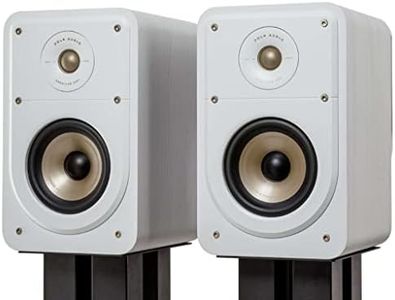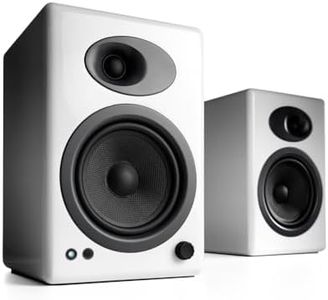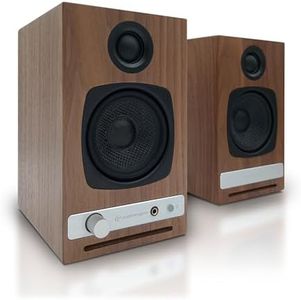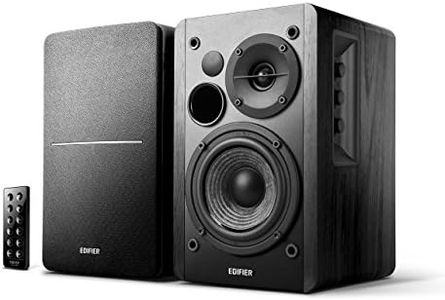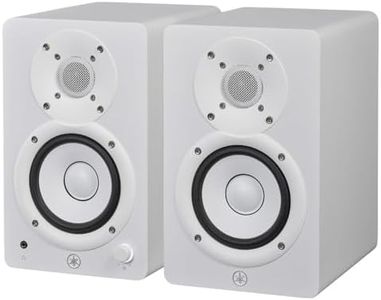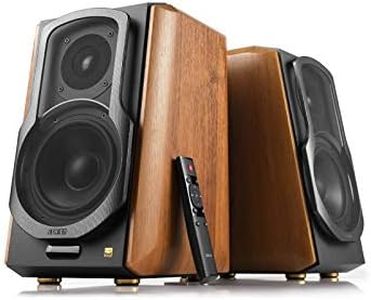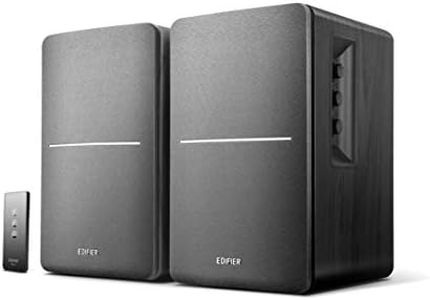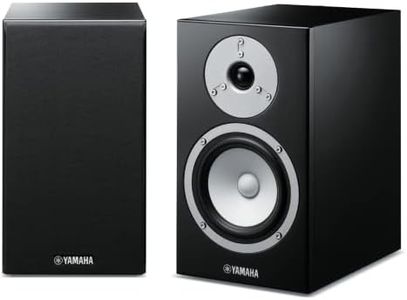We Use CookiesWe use cookies to enhance the security, performance,
functionality and for analytical and promotional activities. By continuing to browse this site you
are agreeing to our privacy policy
10 Best Budget Bookshelf Speakers
From leading brands and best sellers available on the web.Buying Guide for the Best Budget Bookshelf Speakers
Choosing the right bookshelf speakers is key to building a satisfying audio experience in your home. Start by considering where you plan to use them—think about your room size, your listening habits (like music vs. movies), and what devices you'll connect. Understanding the main features will give you the confidence to pick speakers that bring out the best in your favorite sounds.Speaker SizeSpeaker size refers to both the overall cabinet dimensions and the size of the main driver (or woofer). Larger cabinets and bigger woofers typically allow for deeper bass, but might take up more space. Smaller speakers are easier to place on shelves or desks, fitting better in compact rooms, but generally won't deliver as much deep bass as larger ones. Choose a size that fits your space and your expectations for sound quality—if you're using them in a small room or for near-field listening at a desk, smaller speakers may be perfect; for larger rooms where you want fuller sound, a bigger size could be more satisfying.
Power Handling / AmplificationThis spec tells you how much electrical power a speaker can handle, and whether it has a built-in amplifier (active) or needs one (passive). Active speakers are easy to set up as they include amplification, just plug them in and connect your music source. Passive speakers need an external amplifier or receiver. If you already own an amp, passive might be best; if you want simplicity, active speakers are the way to go. Also, if you play music loudly, make sure the power handling matches your needs—higher wattage allows for higher volumes without distortion.
Frequency ResponseFrequency response shows the range of sounds a speaker can accurately play, from deep bass up to sparkling treble, measured in Hz (hertz). A typical bookshelf speaker will have a response starting around 50-60Hz up to 20,000Hz (20kHz). For deep, punchy bass, look for a lower starting number. If you care more about voices and treble clarity, most options will be sufficient. Think about what kind of music or audio you'll play—bass-heavy genres benefit from lower frequency response, while podcasts or classical music may not require extended bass.
Inputs and ConnectivityInputs and connectivity cover how you connect your audio sources—classic binding posts for wired setups, RCA jacks, 3.5mm for simple plug-in, or wireless options like Bluetooth and Wi-Fi. Make sure the speakers match your main devices: if you stream from a phone, wireless features are handy; for turntables or CD players, check for analog inputs. Pick speakers with the connections you regularly use, so setup is smooth and frustration-free.
SensitivitySensitivity indicates how loud a speaker gets with a given amount of power, measured in dB (decibels). Higher sensitivity (above 88dB) means the speaker will get louder with less power. This is especially important if you use a smaller amplifier or want to fill a bigger room. For quiet, near-field use, sensitivity is less critical; for parties or larger spaces, look for higher numbers to ensure enough volume without needing a powerful amplifier.
Build Quality and MaterialsBuild quality and materials affect both sound and longevity. Cabinets made from dense materials like MDF help reduce unwanted vibrations, while higher-quality drivers (the parts that produce sound) tend to give clearer audio. Look for solid construction and finish—this not only looks better but can improve sound. If you plan to move them often or use them in different environments, durable finish and good build become even more important.





